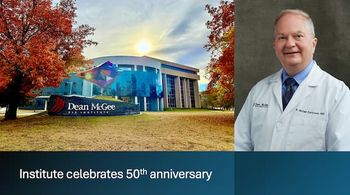
Pledge benefits retinal research
Retinal research will benefit from a multiyear financial pledge to the University of Illinois at Chicago (UIC) department of ophthalmology and visual sciences from Parent Petroleum Co., a partner with the nonprofit organization Hope for Vision.
Chicago-Retinal research will benefit from a multiyear financial pledge to the University of Illinois at Chicago (UIC) department of ophthalmology and visual sciences from Parent Petroleum Co., a partner with the nonprofit organization Hope for Vision.
“On behalf of the vision research community and patients affected with retinal degenerative conditions like retinitis pigmentosa, I would like to thank the fundraising efforts of [Parent Petroleum President] Pete Mancini and [Vice President] Mark Potaczek and the entire Parent Petroleum staff,” said Michael Grassi, MD, director of the UIC Retinal Chemical Genomics Laboratory, whose research will be supported by the commitment. “Their tireless, unwavering support over the past 15 years has helped foster discoveries that will ultimately touch the lives of millions of people.”
Dr. Grassi’s lab examines the molecular basis of common blinding retinal conditions, such as diabetic retinopathy, age-related macular degeneration, and retinitis pigmentosa. His research focuses on developing cell-based models of retinal disease and has implications for furthering the current understanding of the molecular basis of retinal disease and for providing critical insights into its treatment.
The pledge was made possible in part by Parent Petroleum’s annual golf outing, which this year raised more than $100,000 for Hope for Vision, an organization dedicated to finding a cure for blindness through scientific research.
For more articles in this issue of Ophthalmology Times eReport,
Newsletter
Don’t miss out—get Ophthalmology Times updates on the latest clinical advancements and expert interviews, straight to your inbox.


















































.png)


